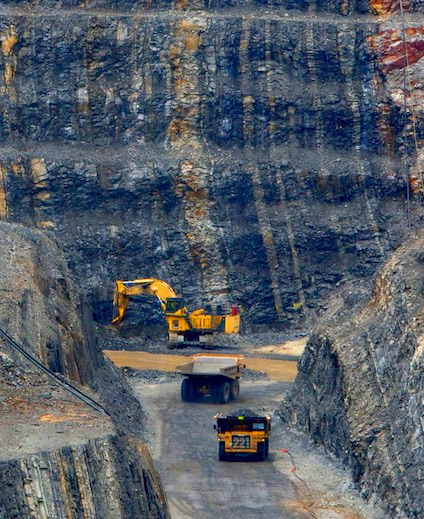McArthur claims slammed
 Analysts have poked holes in Glencore’s claims about the McArthur River zinc-lead mine in the Northern Territory.
Analysts have poked holes in Glencore’s claims about the McArthur River zinc-lead mine in the Northern Territory.
A new Australia Institute report claims the mine imposes significant environmental costs on the local community.
The left-leaning think tank says the Glencore’s claim of being able to produce government revenue of over $1.5 billion is based on flawed economic modelling that estimates tax revenues over a 1,000 year period.
The Northern Territory and Federal Governments are both considering Environmental Impact Statement (EIS) applications for the expansion of the mine in the Gulf of Carpentaria, so that it can keep producing zinc and lead for another 30 years.
In the EIS, Glencore said: “This project estimates significant benefits arising from the approved mine life, with taxes and royalties exceeding $1.5 billion over the four phases, jobs for approximately 840 people, and continuing community investment through the … Community Benefits Trust.”
But the Ai report Wishful Zinking says; “The modelling and economic analysis in these EIS documents … are based on assumptions that are, at times, almost comical”.
“Based on the company's analysis, it's very unclear how you could come to a conclusion that the McArthur River Mine is even a net positive to the Northern Territory economy,” said report author Rod Campbell.
Glencore says it will pay $435 million in royalties to the NT Government over 1,000 years, something the report says is not only impossible to predict over that time period, but also unlikely given what it has paid in the last few years.
“The modelling assumes that Glencore will pay NT payroll tax for 1,000 years, out to the year 3017,” the paper says.
“This is the equivalent of economists in the year 1017 assuming that King Cnut’s annual tax on animal hides possessed by England’s tenant farmers would still be paid today.
“Aurecon’s estimate that McArthur River will pay $435 million in royalties is not backed by any disclosed working or sources and ignores the fact that the mine is known to pay zero royalties in most years.
“The only known royalty payment, of $13 million, came in 2008 after an historic peak in the zinc price. At best the mine would contribute just one third of one percent of NT government revenue.
“Aurecon’s estimate that McArthur River will pay $1,035 million in company tax is also not based on any disclosed working or sources.
“This also ignores information in the public domain that Glencore has often paid zero company tax in Australia and that in years when it does pay company tax, it is at much lower levels than Aurecon imply.”
The experts say this is partly because unlike most other states, the NT has a profits-based rather than production-based royalties system.
The report also casts doubt on the mine’s ability to bring jobs to the region.
Despite a local unemployment rate estimated at over 20 per cent, Glencore estimates only 4 per cent of the mine’s workforce will be locals, with significant numbers of fly-in-fly-out (FIFO) workers.
“Claims of 2,374 ‘indirect’ jobs are based on discredited modelling methods. ‘Inputoutput’ modelling is described as ‘biased’ by the ABS and ‘abused’ by the Productivity Commission,” the report says.
“Despite this, Aurecon apply this methodology over a 1,000 year period, assuming that the structure of industries does not change with changes in technology.
“From an economic perspective, it is likely that the best approach would be to close the mine and rehabilitate the site, and to ensure that Glencore pays for the rehabilitation.”








 Print
Print